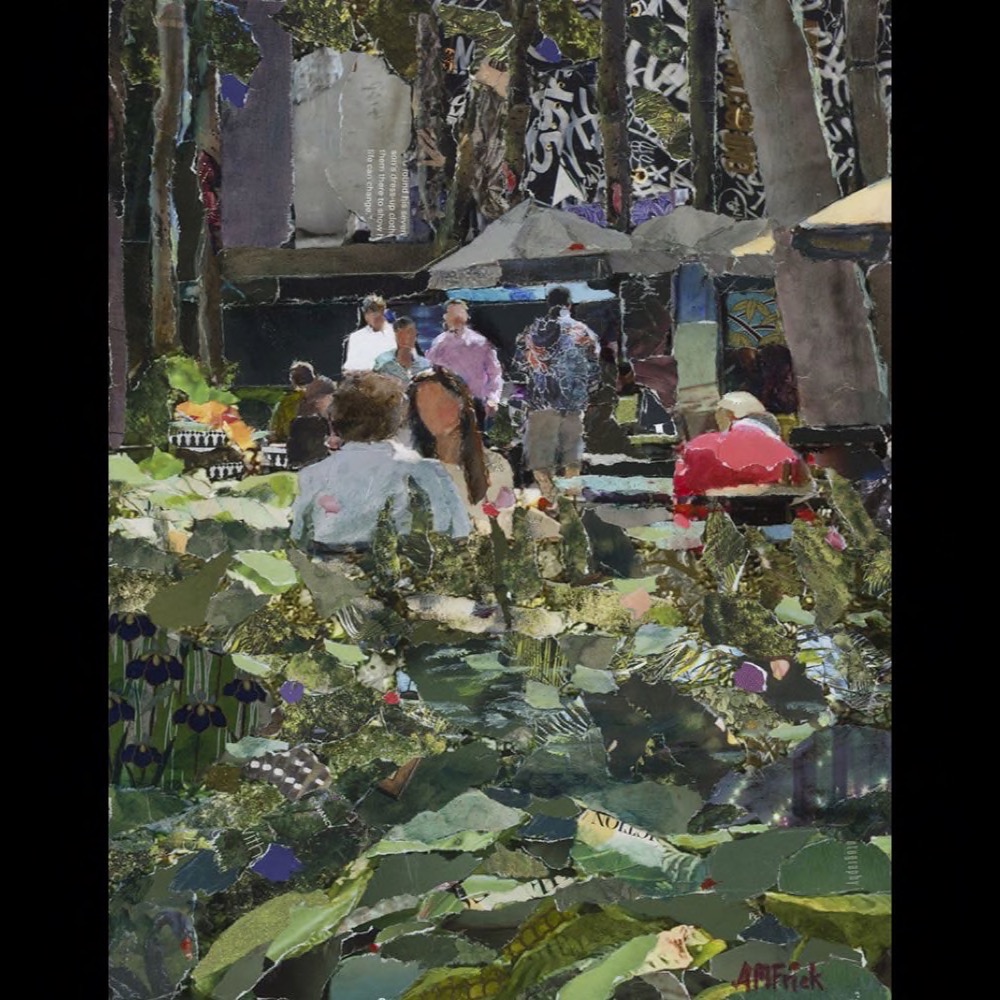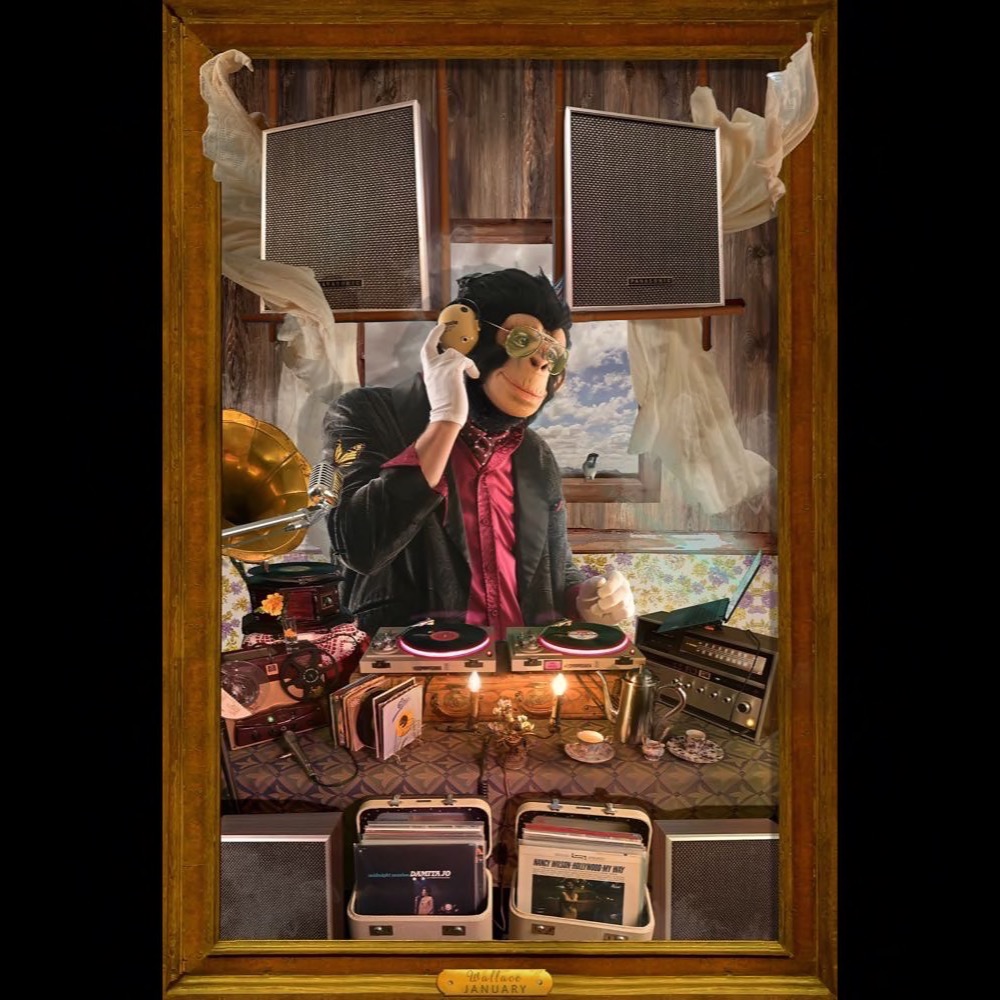This year’s Artist Marketplace at the Utah Arts Festival may be smaller but the 95 artists selected for the three-day event reflect the same rigorous process that has produced significant depth in the creative spectrum represented in the visual artists. With an expert jury, led by coordinators Matt Jacobson and his assistant Sarah Baker Taylor, the group recommended artists not only on the basis of technical considerations such as details and quality of composition or on aspects of color and texture but also on meaning and themes that evoke or echo stories, history, emotions and unique appeal to audiences and potential buyers.
Reiterating a point that has become evident in the latter half of the 2010 is that the Marketplace presents a comprehensive body of artwork that is consistent and cohesive. Furthermore, the selection of artists each year is sensitive to establishing the right balance among new and returning artists. Nearly two out of every three artists represented this year come from outside oof Utah and 16 are making their first appearance at UAF. As last year’s festival was postponed, artists were given the opportunity to roll over their acceptance and other fees to this year’s event. In 2020, there were 623 applications for spots. Approximately 60 artists rolled over to this year. Likewise, seen artists who received either Best of Show or Award of Merit honors at the 2019 festival were guaranteed a spot in this year’s Marketplace. The remaining 28 slots were filled with artists who were on the waiting list and organizers ensured that each medium was represented in the group.
The breadth and depth of diverse artistic approaches are significant once again in this year’s lineup. Among 3-D mixed media artists, Scott Whitaker (Booth 20) is artist engineer and “mad scientist” who upcycles discarded items to create whimsical creatures. From ceramics artists, Andy Blanchard (Booth 53) uses custom-made tools fashioned from hacksaw blades to create inquest chattermark designs on porcelain and stoneware clay. Digital artist Adam Hoffman (Booth 85) creates fractals using math algorithms which are layered to generate complex organic feeling designs. In the drawings/pastels category, Nicholas Baker (Booth 28) morphs his pieces from an undetermined amount of stipples into life-like subjects with a hyper-realism effect.
Glass artist Shawn Tsai (Booth 5) uses flame-worked borosilicate glass that is hand sculpted with a blowtorch to create animal pieces. Among the artists working in jewelry, Konor Rockhill (Booth 62) fashions delicate wire-wrapped jewelry using precious metals such as silver and gold along with precious and semi-precious gemstones, as inspired by ancient cultures and philosophies. Metalwork artist Cody Steffler (Booth 58) creates 3-D nature scenes using metal with the colors being achieved by varying degrees of heat, which are responsible for the effects it has on different types of metal. Photography artist Evan Kovasi (Booth 40) produces high-resolution 360-degree panoramas composed of many images, painstakingly aligned and blended to appear as a single photograph. Sculptor Mick Whitcomb (Booth 57) creates utilitarian sculptures by converting scientific innovations of the 19th century into light fixtures using lighting technologies from that period. The pieces involve soldering, welding and dry joinery. Wood artist Christopher Rasmussen (Booth 86) takes storm-damaged trees that are turned on a lathe and subsequently carved and sanded by hand that become beautiful, practical sculptural pieces.
The artists who won awards at the 2019 festival and are returning this year include:
Jennah Litecky Yost & Paul Yost (Cheshire, Oregon, Booth 83)
The Yosts, who won best in show, run FireSmith Copper where they leverage the full range of copper’s luminosity, flexibility, and color possibilities by incorporating free-hand, flame-painting techniques. Regarding the return to in-person shows after the long pandemic shutdown, the artists wrote the following in a blog on their website:
“We love to share stories, learn about who you are, share a laugh or experience, and most importantly share our passion for the artwork we create. The personal relationships we make at art shows are invaluable to our business. These people are who kept our business alive throughout the pandemic. Without them, we would no longer be able to pursue our passion to create one-of-a-kind works of art. An important side note is how much we value the relationships we have fostered with fellow artists. Those relationships have not only made us more successful as artists but better human beings in general. We cherish the many friendships we’ve made.”
Brit Hansen (Joseph City, Arizona, Booth 35)
Hansen, who received an award of merit, is a fourth-generation Arizona artist who discovered a passion for printmaking while pursuing the bachelor of fine arts degree but only returned to it after working primarily as a photographer and being put on bed rest during her first pregnancy. She carves linoleum blocks, wood blocks and painted panels.
Mike Beals (Apple Valley, Utah, Booth 49)
Winning best in show in 2019, Beals is a fourth-generation blacksmith who fashions metal sculptures using a form of drip welding to achieve distinct textures and then infuses the sculptures with glass created in the studio.
Aileen Frick (Phoenix, Arizona, Booth 80)
Frick, who received an award of merit, produces mixed media collage paintings. In her artistic statement, she notes, “Beauty and silence play an important part in my artwork. The paintings become quiet meditations on meaning and existence. Most of all, I try to create spaces that will invite the viewer inside. Each image is a progression of time into a quiet place within. The artistic result is no more than the language of that expression. Be it a vision, a memory, or an attraction, what is stored within cannot always be expressed in words. The degree, depth and sincerity of feelings or emotions are difficult to properly describe with language. My art is my music. Its measure may be the degree you find within yourselves connections to what I do not say, but what lies before you within the collage.”
Jennifer Seeley (Tooele, Utah, Booth 25)
The People’s Choice Winner in 2019, Seeley was born in Salt Lake City and received the bachelor of fine arts degree in drawing, painting and art education at Utah State University. Much of her work is inspired by nature and outdoor recreation. Often mixing paint directly on the canvas, she uses a counterpoint of rapid, loose brush strokes and slow refined strokes, along with bright, deliberately chosen color schemes.
Amy Flynn (Raleigh, North Carolina, Booth 51)
Featured at The Utah Review in 2019, Flynn, who received an award of merit, creates FOBOTS (Found Object Robots) with upcycled parts of a vintage nature and then solders and bolts them together to create unique whimsical robots. Flynn gives each creation a name, number, date of birth and a heart – just like the Tin Man from The Wizard of Oz. Flynn in interviews is as whimsical as her art. Regarding the inspirational basis of her work, she said at the time, “My training is as an illustrator. I did that for 27 years, before the economy tanked. The robots are purely self-taught, and my only influences have been the cool parts I find.”
Shawn Harris (Trinidad, Colorado, Booth 54)
A Salt Lake City native, Harris, who received best in show, is a 1995 graduate of The University of Utah and now lives and works in the small town of Trinidad within the southeastern boundary region of Colorado. In a feature in Shoutout Colorado, Harris explained the process of his work, which uses Photoshop editing on the photo-based imagery he creates. “My work begins with shooting landscapes and interiors. I’ve always been inspired by good landscape photography. For me, landscape photography often leaves me wondering how animals and humans interact within the space,” he explains. “When photographing a place, I listen for the stories, I wonder what craziness may have taken place. Was there an alien abduction? A bear wrestling a pack of raccoons while riding a motorcycle? Anything is possible, I’m interested in seeing how much of a story I can get away with. I want to present what might be a scene from a movie or an introduction to a novel that’s gone off the rails.”
Harris also takes great effort to make this a truly solo project, as he dons the masks and outfits to stand in as characters, selecting items from a large collection of latex masks and props he has acquired. The process is meticulous to the point: “I shoot 500-1000 images to make one final piece. I may only use 50-125 of those images to make the final piece but I have to overshoot my options, pick and choose the right props with the right angles/lighting/perspectives. I digitally layer everything together and print my work on aluminum.”
For more information about all events, see the Utah Arts Festival website. Ticket information can be found here.







